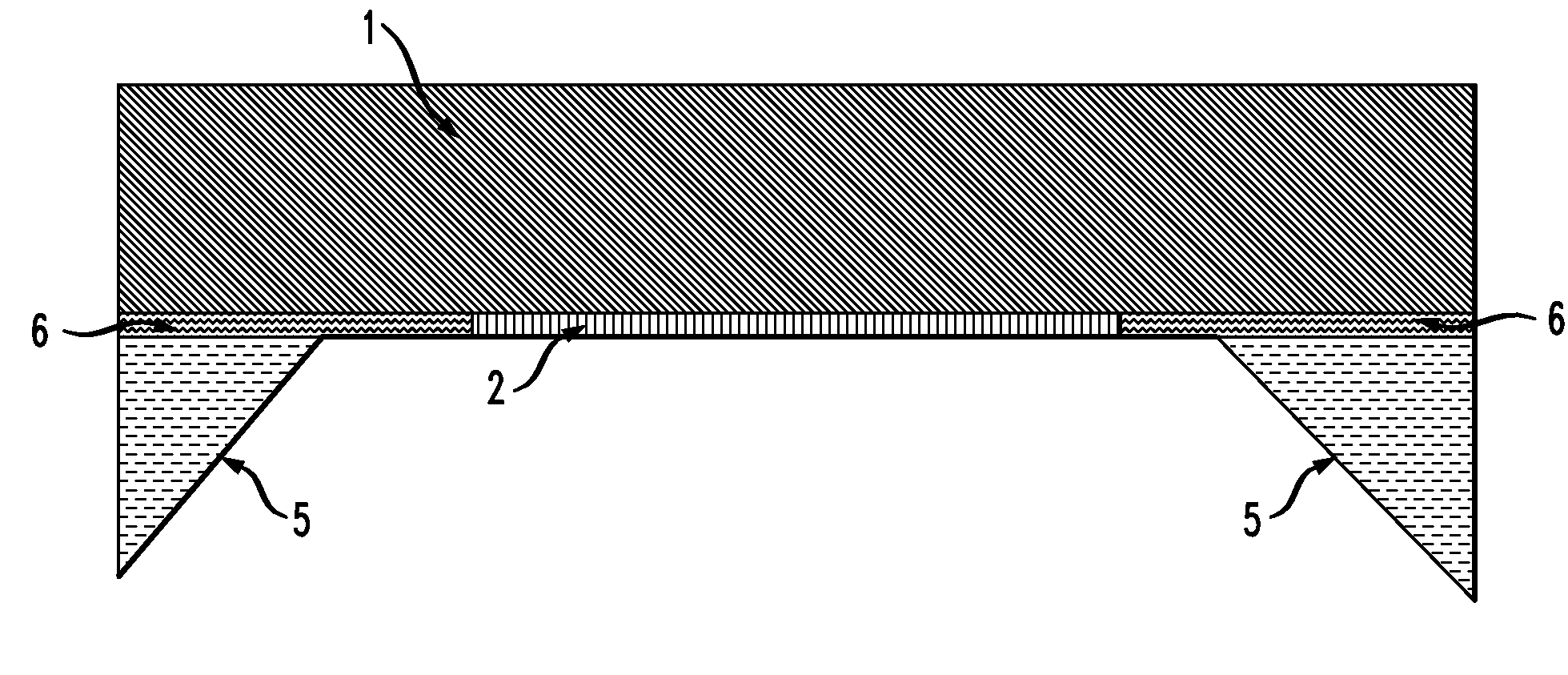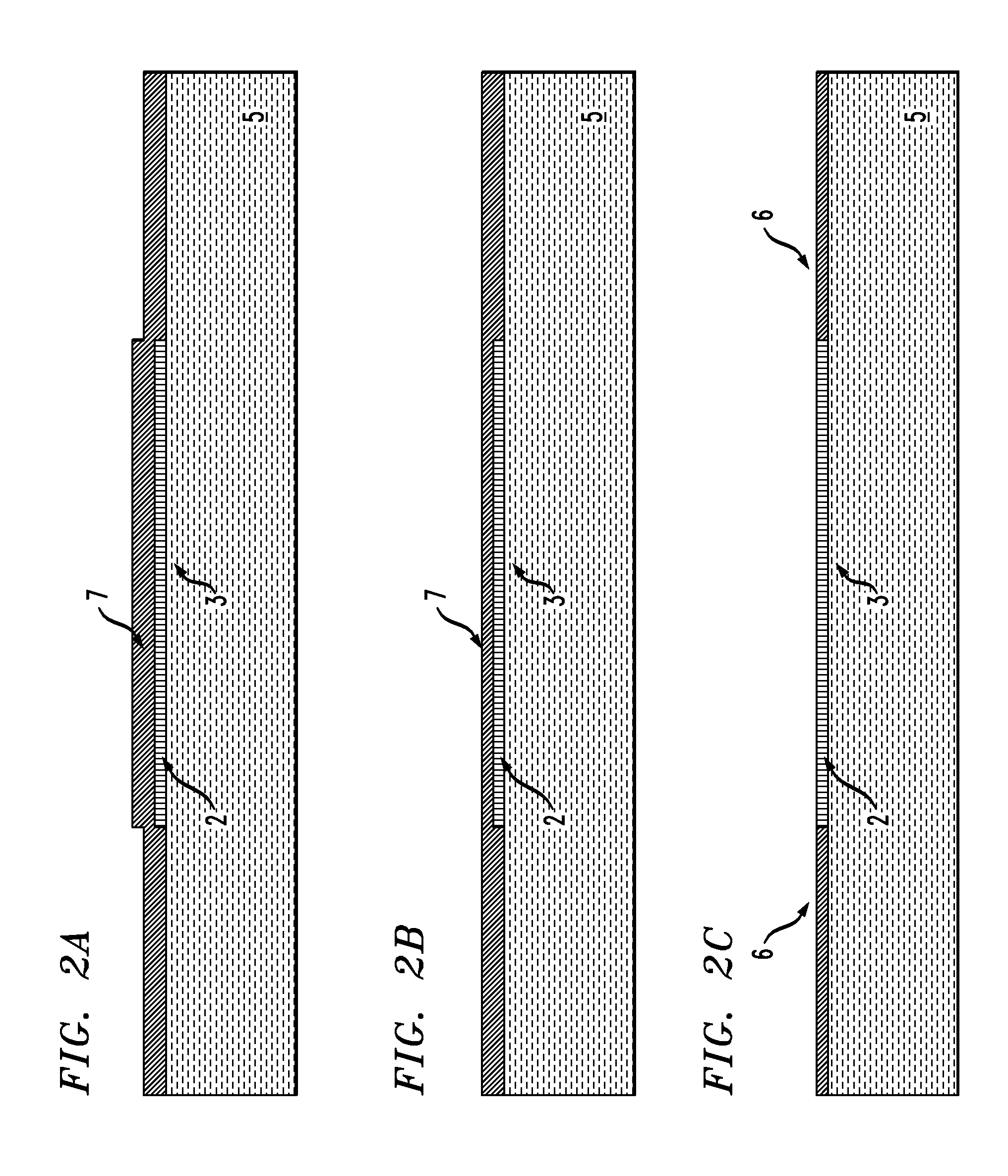Methods of fabricating a membrane with improved mechanical integrity
a technology of mechanical integrity and membrane, applied in the direction of piezoelectric/electrostrictive transducers, generators/motors, variable capacitors, etc., can solve the problems of device literally falling apart, discontinuous film growth, etc., to reduce the height of the step or edge, and reduce the negative effect of electrode steps or edges
- Summary
- Abstract
- Description
- Claims
- Application Information
AI Technical Summary
Benefits of technology
Problems solved by technology
Method used
Image
Examples
first embodiment
[0053]In the invention, the elimination of the edge through placement of a material adjacent to the base electrode of equal or comparable height is achievable through multiple processes. These processes include chemical mechanical polishing (CMP) planarization, polymer planarization, and polymer reflow with liftoff. In each process, the height of the step or edge (20) from FIG. 1 is eliminated or reduced through placement of a material adjacent to the electrode (2) of equal or comparable height.
[0054]FIGS. 2A through 2C illustrate the generic planarization process. First, a sacrificial film (7) roughly twice the thickness of the electrode is deposited over the patterned electrode (2), resulting in FIG. 2A. Preferred metals for the electrode (2) include aluminum and titanium, but may be any suitably conducting element or compound. The sacrificial film (7) is a non-conductive material, preferably with a low dielectric constant. Although the preferred material for this film is SiO2, ot...
third embodiment
[0082]In the invention, a continuously smoothed dome is achieved through specific use of lithography, deposition and etching steps. The doming decreases the effects of the edge of the electrode on membrane integrity. It is accomplished by melting or reflowing resist with solvent into a drop shape. The resist and material underneath it are then simultaneously etched and the shape is thus transferred.
[0083]FIGS. 7A through 7D are an illustration of the process steps for producing a continuously smoothed dome electrode.
[0084]This technique is based upon development of a process such that, for a selected etchant, the resist and masking material will have comparable etch rates. Under these circumstances, as the etch proceeds the resist's vertical profile will be mimicked in the electrode profile. For example, if the electrode (2) and resist removal rate are equal the vertical profile of the resist will be exactly reproduced in the electrode (2) beneath the resist. If however the resist i...
fourth embodiment
[0089]FIGS. 8A-8I show a fourth embodiment where the electrode is patterned as a final step in the process instead of during the initial steps.
[0090]In this embodiment, a very thin layer of a non-conducting material (21) is deposited on a substrate (8). The non-conducting material (21) has a low dielectric constant. Preferable non-conducting materials (21) include SiO2 and SiN. The substrate (8) is preferably Si or GaAs. The resulting wafer is shown in FIG. 8A.
[0091]The thin, non-conducting material (21) is first patterned into the shape desired for the patterned electrode in the finished device. This step results in the wafer shown in FIG. 8B.
[0092]Then, a first layer (22) of metal is deposited everywhere. Subsequently, a second layer (23) of a different metal is deposited. These two layers (22) and (23) preferably are Ti and Al, respectively, and while left unpatterned at this point, will ultimately form the patterned base electrode. Subsequently, a layer (24) of piezoelectric mat...
PUM
| Property | Measurement | Unit |
|---|---|---|
| thickness | aaaaa | aaaaa |
| thickness | aaaaa | aaaaa |
| temperature | aaaaa | aaaaa |
Abstract
Description
Claims
Application Information
 Login to View More
Login to View More - R&D
- Intellectual Property
- Life Sciences
- Materials
- Tech Scout
- Unparalleled Data Quality
- Higher Quality Content
- 60% Fewer Hallucinations
Browse by: Latest US Patents, China's latest patents, Technical Efficacy Thesaurus, Application Domain, Technology Topic, Popular Technical Reports.
© 2025 PatSnap. All rights reserved.Legal|Privacy policy|Modern Slavery Act Transparency Statement|Sitemap|About US| Contact US: help@patsnap.com



